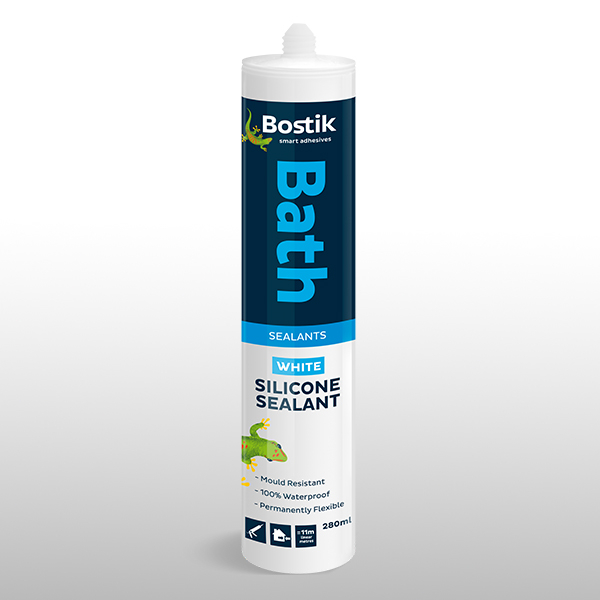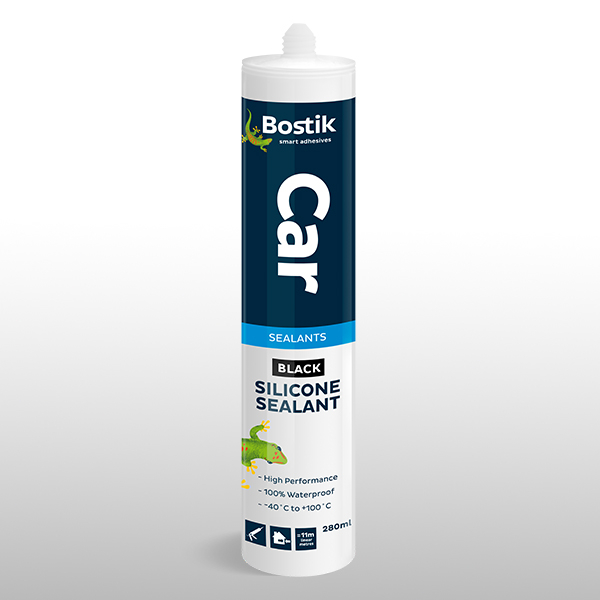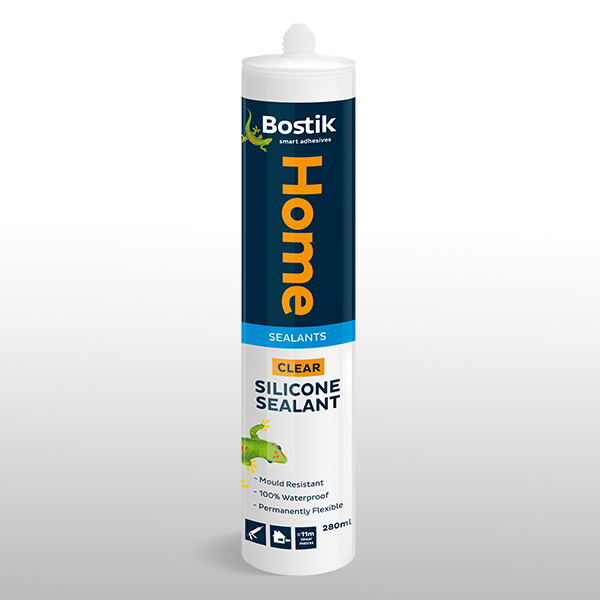MIRROR SILICONE SEALANT
Non-corrosive silicone sealant suitable for mirrors.
Clear
Features & benefits
Bostik Mirror is a high quality, neutral curing, silicone based adhesive that provides a strong permanent flexible bond for mirrors to painted surfaces, plaster, metal or wood. It has a low odour and does not release acid during curing making it non-corrosive to metals, mirror backings and suitable for use on alkaline materials such as concrete, cement, mortar, masonry and plaster. It has a non-sag rheology and can be applied to vertical surfaces. Designed for mirror installations - bonding mirrors to painted surfaces, plaster, metal or wood. Suitable for emergency DIY sealing and bonding tasks in and around the house.
Exhibits excellent primerless adhesion to glass and mirror backings, and alkaline surfaces such as concrete, fibrous cement, mortar and plaster. It also offers excellent adhesion to many other non-porous materials e.g. ceramics, enamel, porcelain, coated wood, painted surfaces, canvas, some rubber, most metals (mild steel, stainless steel, aluminium, copper, tin, galvanized iron, brass or zinc) and some plastics acrylics (epoxide, acrylics, polyester, polyacrylate, polycarbonates, polystyrene, formica, fiberglass, polycarbonates and rigid PVC).
May become discoloured in contact with some organic elastomers, which tend to bleed oil or solvents into the silicone, e.g. EPDM, APTK, Neoprene and Bituminous surfaces. Not suitable for contact with natural stone i.e. marble, granite, quartzite as it may discolour the surfaces. Will not adhere to some plastics such as polyethylene, polypropylene and Teflon. Do not apply sealant when relative humidity is below 10% - cure rate will be affected.
NOT SUITABLE FOR FISH TANKS (contains a fungicide).
Not paintable.
Technical Information
Bostik DIY South Africa Seal - Mirror Silicone Sealant Technical Data Sheet (477.44 KB)
Bostik DIY South Africa Seal - Mirror Silicone Sealant Safety Data Sheet (138.87 KB)
How to use
Ensure surfaces are clean, dry and free of loose materials, dust, grease, rust and other contaminants.
90ml Tube
- Remove cap from tube and pierce film with reverse side of cap to break seal.
- Apply silicone in narrow vertical beads (4mm bead size with 3 – 5cm spacing).
- After applying the adhesive, press the mirror firmly onto the surface within 15 minutes before skin formation occurs on the silicone.
- Ensure that the mirror is firmly fixed in place on the surface.
- Support blocks or adhesive tape must be used to provide initial support until the silicone is fully cured (approximately 48 hours).
- Very large mirrors may require the use of permanent mechanical support in addition to Bostik Mirror.
280ml Cartridge
- Cut the tip off the cartridge and screw on the nozzle.
- Cut the tip of the nozzle at an angle to achieve the desired bead size.
- Using a caulking gun, apply silicone in narrow vertical beads (4mm bead size with 3 – 5cm spacing).
- After applying the adhesive, press the mirror firmly onto the surface within 15 minutes before skin formation occurs on the silicone.
- Ensure that the mirror is firmly fixed in place on the surface.
- Support blocks or adhesive tape must be used to provide initial support until the silicone is fully cured (approximately 48 hours).
- Very large mirrors may require the use of permanent mechanical support in addition to Bostik Mirror.
IMPORTANT: Never apply a perimeter bead of silicone around the mirror and never apply the silicone in large blobs (typically one at each corner). These application techniques will prevent the silicone from curing fully, risking catastrophic failure as well as increase the risk of discolouration occurring and showing through on the mirror face. Avoid getting silicone on the front face of the mirror.
FAQs
How do I remove uncured silicone?
Uncured silicone can be removed from the hands or tools using a clean solvent soaked cloth, e.g. turpentine or paraffin. If removing uncured silicone from clothing, check fabric colour fastness before applying solvents.
How do I store my silicone?
To maximize the shelf life of an opened silicone cartridge, we recommend that the nozzle be removed and a piece of plastic placed over the cartridge tip after which the nozzle must be screwed back on. A large screw inserted into the nozzle tip also helps to extend the life. Store in a cool environment.
I need more technical advice on this product?
Please call our Sticky Questions toll free helpline during office hours on 0800 222 400, or send an email [email protected].
Find new, smarter ways of doing things.

Find out what product you need, how to use it and where to buy it.
PRODUCT FINDER



